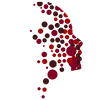Your Speech Pathologist has determined that you are at risk for fluids going “down the wrong way” and entering your lungs. This is a problem because it can be harmful to your lungs. Your Speech Pathologist has determined that making your liquids thick may help to reduce your risk this way.
Thickening Agents
There are various commercial thickening agents that are readily available at most pharmacies. The most common of these are powders that can be added to nearly any liquid. “Thick-It” and “Thicken-Up” are two such commonly found products. There are also other thickeners as well as ready-to-drink products available online. The SLP staff can assist you with this if you like.
A less expensive way to thicken liquids is by using potato flakes or baby cereal. When added to liquids, these will also thicken well. These may take a bit more blending to achieve a smooth texture and the taste may be different than when using a commercially designed product.
Levels of thickened Liquid
There are three distinct levels of thickened liquids:
- Nectar Thick (Level I)
- Honey Thick (Level II)
- Pudding Thick (Level III)
Of course, if you are thickening liquids yourself, there can be variations somewhere between the level (i.e., Thicker than nectar but still thinner than honey). As long as the liquid is at least as thick as what you are prescribed, it’s ok. You must thicken to level you are prescribed or more. Follow the directions on the thickener label to thicken to the appropriate consistency when using a commercial product. Trial-and-error will work best when using potato flakes/baby cereal as these respond differently to different liquids.
What should be thickened
All thin liquids need to be thickened before you eat or drink them. Here is a list of liquids that must be thickened:
- Water
- Juices
- Milk
- Egg Nog
- Soda Pop
- Soups
- Coffee and Tea (Hot or Iced)
- Hot Chocolate
- Thin Gravies and Sauces
- Nutritional Supplements (Ensure, Boost, etc.)
Foods and liquids to avoid
Some food items are difficult to swallow safely when you must use thickened liquids. Other food items produce juices when chewed and should also be avoided. Here is a list of items to avoid while you are required to thicken your liquids:
- Jell-O
- Popsicles (Melts to a Liquid)
- Milk Shakes (Usually ok for Nectar Level Diets)
- Ice Cream and Sherbet (Usually ok for Nectar Level Diets)
- Ice and Ice Chips
- Slushes and Smoothies
- Canned Fruits (Full of Juice)
- Vinegar based salad dressings (Too Thin)
- Juicy Fresh Fruit
- Tomatoes (Too Juicy)

